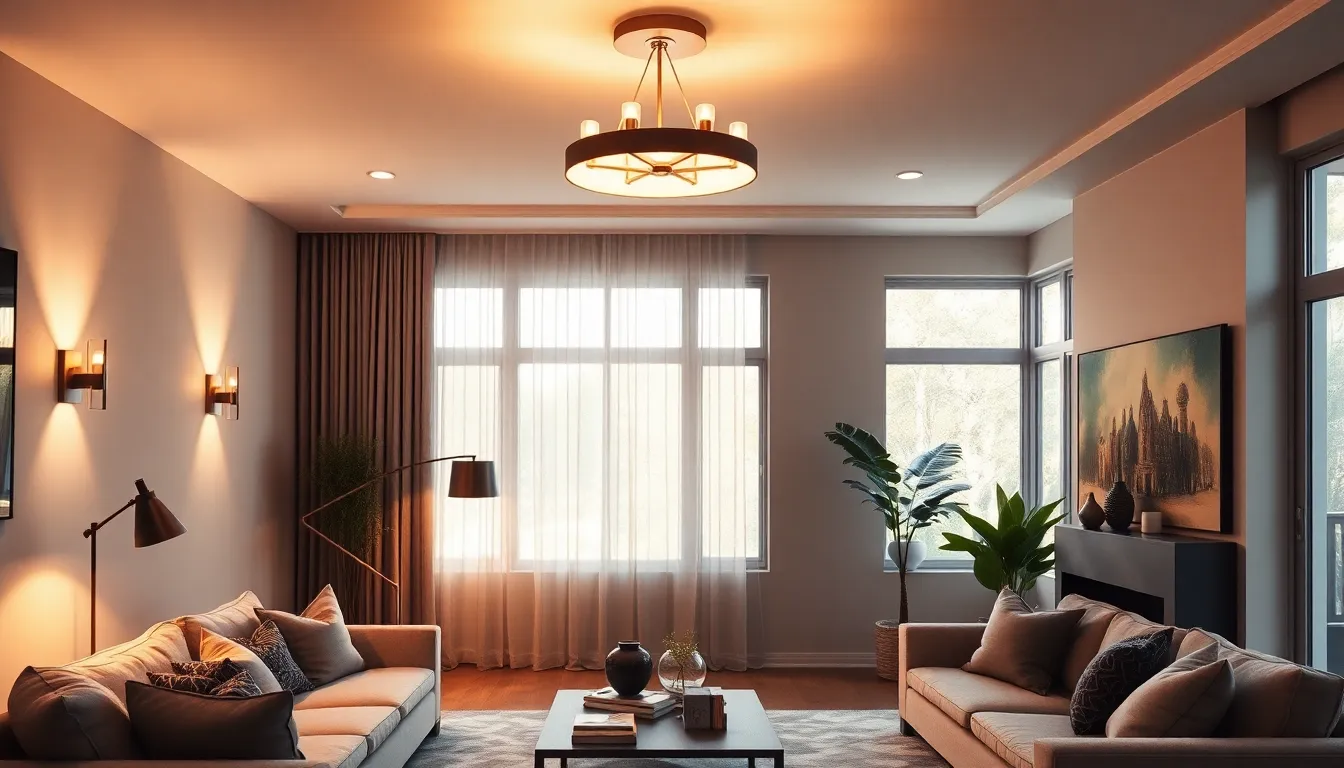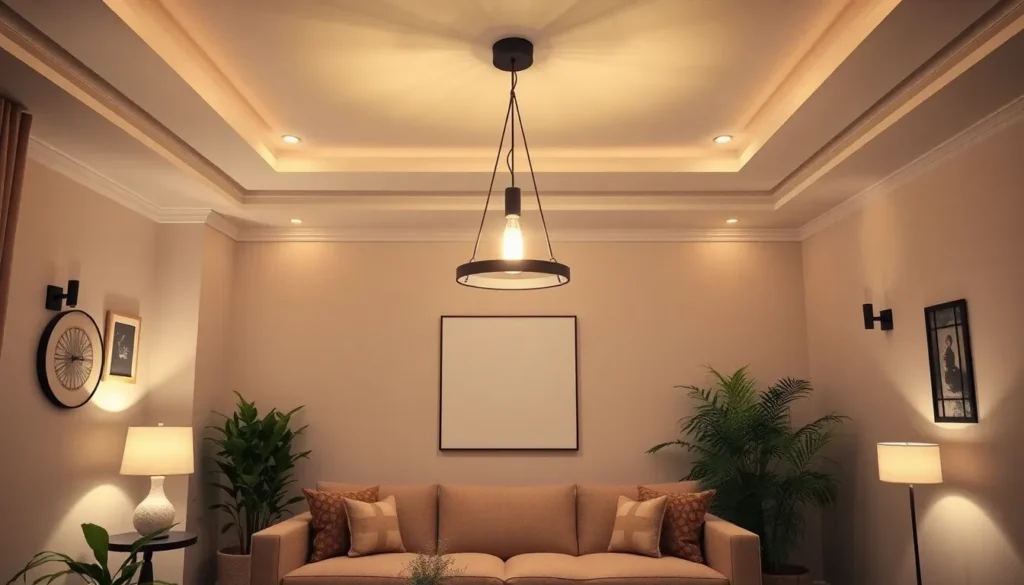In the world of interior design, ambience is everything. Picture this: you come home after a long day, ready to unwind, but the harsh glare of overhead lights makes you feel like you’ve just walked into a hospital. Ouch, right? That’s where the magic of an ambient lighting palette comes in to save the day. By mastering the art of ambient lighting, you turn any space into a cozy retreat or a lively party venue with a flick of a switch. Buckle up as we jump into the radiant universe of ambient lighting, where every shade and shimmer has a purpose.
Table of Contents
ToggleUnderstanding Ambient Lighting

The Importance of Lighting in Design
Ambient lighting is the unsung hero of home decor. It sets the mood in any room, guiding how people feel in the space. Great ambient lighting creates warmth, intimacy, and even energy. Without it, a beautifully designed space can feel lifeless and cold.
Think about it, when entering a room lit solely by a bare bulb, the atmosphere feels stark. Yet, add dimmers, floor lamps, and strategically placed lighting, and suddenly, that room transforms from a sterile box to a sanctuary. Lighting is not just a need: it’s the heartbeat of your design.
Types of Ambient Lighting
There are a few types of ambient lighting that homeowners should consider, ceiling fixtures, wall sconces, table lamps, and even natural light.
- Ceiling Fixtures: This includes chandeliers, flush mounts, and pendant lights. They provide the primary light source and often dictate the style of a room.
- Wall Sconces: These can add a soft glow while freeing up table and floor space. They work wonders in hallways or narrow spaces.
- Table Lamps and Floor Lamps: Flexible and functional, these are excellent for creating cozy reading nooks or highlighting specific areas.
- Natural Light: Let’s not forget good old sunshine. Natural light boosts mood and well-being while making a room feel larger and more inviting.
Color Temperature and Mood
Choosing the Right Color Palette
Color temperature plays a crucial role in setting the mood for your space. It’s all about those warm and cool tones. Warm light, typically around 2700K to 3000K, gives off a cozy, comfortable vibe, making it perfect for living rooms and bedrooms. On the flip side, cool light (5000K and above) energizes and stimulates, making it more suitable for kitchens and workspaces.
To choose the right color palette, think about the activities that will happen in each space. Do you want a calming warm glow to sip your evening tea by, or do you prefer a bright, focused light for late-night work sessions? Essentially, the decisions you make here can significantly impact the feel of your home.
Creating Cohesion with Color Schemes
Creating a cohesive color scheme with your ambient lighting can elevate your design significantly. Color harmony is essential in maintaining a balanced look throughout the space. For example, pairing warm-toned fixtures with neutral or warm wall colors can unify the atmosphere.
You can also experiment with accents. If a room features a cool color palette, consider using a slightly cooler light to create continuity. Just remember: consistency is key. It enhances flow while keeping the overall design intentional and polished.
Incorporating Texture and Patterns
Layering Light for Depth
By embracing texture and patterns in your ambient lighting, you create visual interest and depth. Layering different types of lighting, such as combining overhead lights with wall sconces, adds dimension to a space and enhances the dynamics within it.
Think along the lines of textures with varied finishes. A matte surface contrasts beautifully with glossy elements. This contrast allows light to reflect off surfaces differently, enriching the environment. Experiment with different patterns in shades and fixtures. Textured lampshades can diffuse light uniquely, creating playful shadows on the walls.
Enhancing with Decorative Fixtures
Practical Tips for Implementation
Implementing ambient lighting doesn’t have to be overwhelming. Here are some practical tips:
- Use Dimmers: They allow flexibility in brightness, letting you set the mood effortlessly.
- Strategic Placement: Position lamps and fixtures where they can maximize effect, think corners, reading nooks, or focused spots to highlight artwork.
- Mix Styles: Eclectic designs can create a unique character. Mixing modern with vintage adds layers of storytelling and charm to your space.

